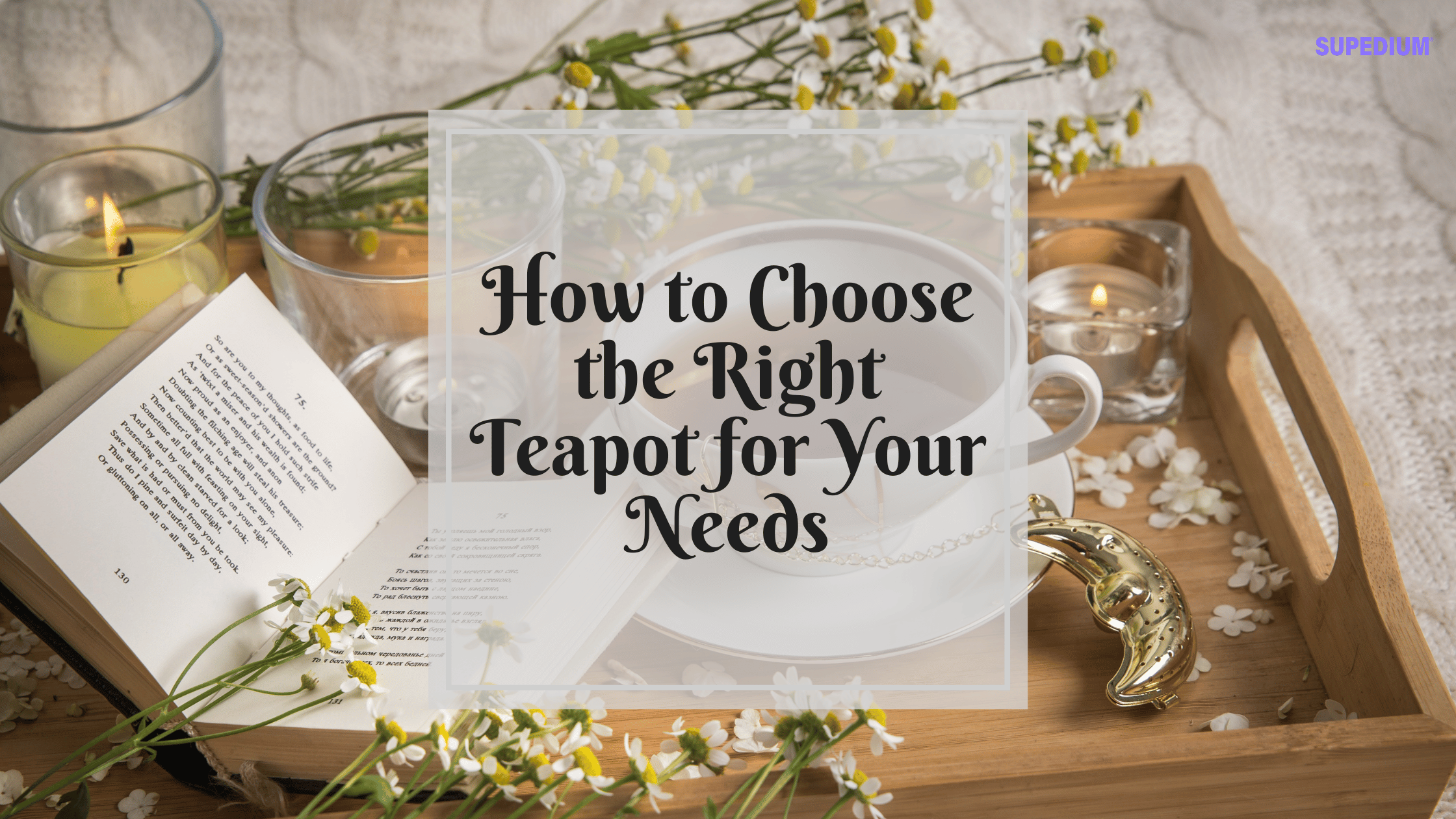Table of Contents
![]()
Tea is a beloved beverage enjoyed by millions worldwide, and the way it is prepared can significantly impact the experience. The two main methods for brewing tea are using loose leaf tea and tea bags. Each method has its own set of advantages and drawbacks, and understanding these can help you make the best choice for your tea-drinking preferences.
Loose Leaf Tea
Description
Loose leaf tea consists of whole or large pieces of tea leaves, offering a more authentic and robust flavor profile compared to the often finely cut leaves found in tea bags. Loose leaf tea is generally considered higher quality due to its minimal processing.
Types
Loose leaf tea comes in various types, including:
- Black Tea: Known for its strong flavor and dark color, black tea is fully oxidized and can be enjoyed plain or with milk and sugar.
- Green Tea: This tea is minimally oxidized, resulting in a lighter color and more delicate flavor.
- Oolong Tea: A partially oxidized tea that offers a flavor profile between black and green tea.
- Herbal Tea: Made from a blend of herbs, spices, and other plants, herbal teas are caffeine-free and come in a variety of flavors.
Equipment Needed
To brew loose leaf tea, you’ll need a few essential items:
- Tea Infuser or Strainer: An infuser or strainer holds the tea leaves while allowing the water to pass through and extract flavor.
- Teapot or Cup: A teapot is ideal for brewing larger quantities, while a cup can be used for single servings.
Brewing Process
The brewing process for loose leaf tea involves:
- Measuring the Tea Leaves: Typically, use one teaspoon of loose leaf tea per cup of water.
- Water Temperature: The temperature of the water should match the type of tea. For black tea, use boiling water (around 212°F or 100°C). For green tea, use slightly cooler water (around 175°F or 80°C).
- Steeping Time: Steep the tea according to its type. Black tea usually takes 3-5 minutes, while green tea may only need 2-3 minutes.
- Adjusting to Taste: Adjust steeping time and quantity based on personal preference for strength and flavor.
Benefits
- Richer Flavor and Aroma: Loose leaf tea offers a fuller, more nuanced flavor and aroma.
- Greater Variety and Customization: There is a wide range of loose leaf tea options and blends to explore.
- Fresher and More Natural: Loose leaf tea is often fresher and less processed, which can contribute to a more natural taste.
Drawbacks
- Requires More Equipment and Preparation: The need for additional tools and the time required for preparation can be a downside.
- Can Be Messier: Handling loose tea leaves can create a bit of a mess.
- Potentially More Expensive: Loose leaf tea can be more costly compared to tea bags.
Tea Bags
Description
Tea bags contain pre-measured amounts of tea leaves enclosed in a small, porous bag. This method is designed for convenience and ease of use.
Types
Tea bags come in a variety of options, including:
- Black Tea: Convenient for a quick and strong brew.
- Green Tea: Available in many flavors, including flavored varieties.
- Herbal Tea: Often found in a range of flavors, providing caffeine-free options.
- Flavored and Specialty Blends: Includes various flavored blends and specialty teas.
Brewing Process
Brewing tea from tea bags is straightforward:
- Placing the Bag in the Cup: Simply put the tea bag into a cup or mug.
- Water Temperature: Use water at the appropriate temperature for the type of tea.
- Steeping Time: Allow the tea bag to steep for the recommended time, usually 2-5 minutes.
- Removing the Bag: After steeping, remove the tea bag and dispose of it.
Benefits
- Convenience and Ease of Use: Tea bags are quick and easy to use, requiring minimal cleanup.
- Portability: Ideal for on-the-go brewing and travel.
- Consistent Strength and Flavor: Tea bags offer a consistent taste and strength.
Drawbacks
- Limited Flavor Complexity: The smaller tea leaves in tea bags may not offer the same depth of flavor.
- Often Contains Lower Quality Tea Leaves: The tea in bags can be more processed and lower quality.
- Less Environmentally Friendly: Single-use tea bags contribute to waste, although some brands offer compostable options.
Comparing Loose Leaf Tea and Tea Bags
Flavor and Quality
Loose leaf tea generally provides a richer flavor and more complex aroma due to the use of larger, whole leaves. Tea bags, on the other hand, often contain smaller, processed leaves or fannings, which can result in a less nuanced flavor.
Convenience vs. Experience
Tea bags offer unparalleled convenience, ideal for busy lifestyles. Loose leaf tea, however, provides a more immersive experience, from selecting and measuring the leaves to enjoying the brewing ritual.
Cost Analysis
Initially, loose leaf tea may be more expensive due to the higher quality of the leaves and the need for additional equipment. Over time, however, the cost per cup can be lower compared to the ongoing purchase of tea bags.
Environmental Impact
Tea bags often contribute to more waste, particularly if they are not compostable. Loose leaf tea, when used with a reusable infuser, tends to be more environmentally friendly.
Choosing the Right Option
Considerations for Personal Preference
Choose based on your flavor preferences and lifestyle. If you value convenience and consistency, tea bags might be the better option. If you prefer a richer tea experience and are willing to invest in the preparation, loose leaf tea is worth exploring.
Recommendations for Beginners
Starting with tea bags can be a good way to familiarize yourself with different types of tea. As you become more interested, you can gradually explore loose leaf options and invest in quality brewing equipment.
Tips for Enthusiasts
Experiment with various types and blends of loose leaf tea to find what you enjoy most. Invest in quality equipment like a good tea infuser or teapot to enhance your brewing experience.
Conclusion
Both loose leaf tea and tea bags have their own unique advantages and drawbacks. Loose leaf tea offers a richer flavor and a more engaging tea-drinking experience, while tea bags provide convenience and consistency. Ultimately, the best choice depends on your personal preferences and lifestyle. Whether you opt for the traditional method or the modern convenience, enjoying a cup of tea can be a delightful part of your daily routine.
Share This





Be the first to comment